hydrogen
Latest
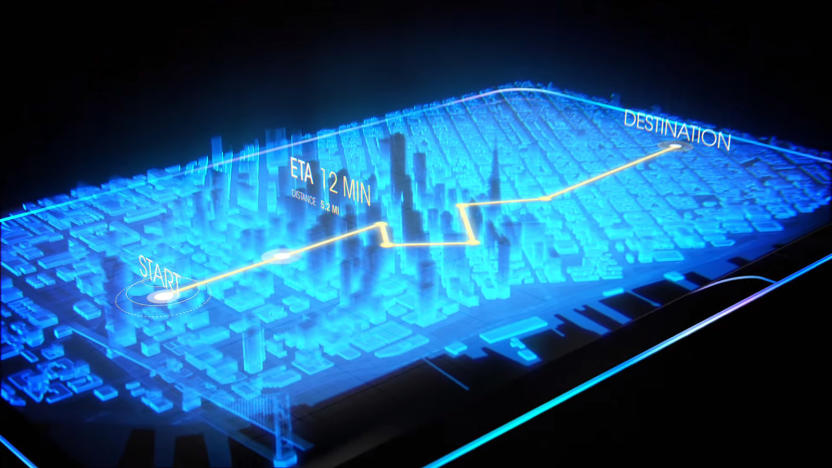
RED reveals more about its holographic smartphone display
When RED Camera first announced its crazy $1,200 Hydrogen smartphone with a "holographic display," a lot of folks wondered how that would actually work. Now, CEO Jim Jannard has revealed that RED is creating the screen in partnership with a company called Leia Inc. (yes, like that Leia). A spin-off from Hewlett-Packard labs, it calls itself "the leading provider of light field holographic display solutions for mobile," and the key words "light field" gives us a pretty good idea as to how it works

Camera maker RED is building a phone with a 'holographic' screen
We've seen the venerable Kodak and Polaroid brands slapped onto smartphones before, but RED — makers of those pricey digital cinema cameras — is trying something a little different. The company just revealed its plans to release the Hydrogen One, a high-powered, unlocked Android smartphone with prices starting at an eye-watering $1,195. That gets you an aluminum phone with some crazy looking grips; the titanium finish will set you back an extra $400. And here's the really crazy part: if RED can actually deliver what it promises, the Hydrogen One may actually be worth the asking price.
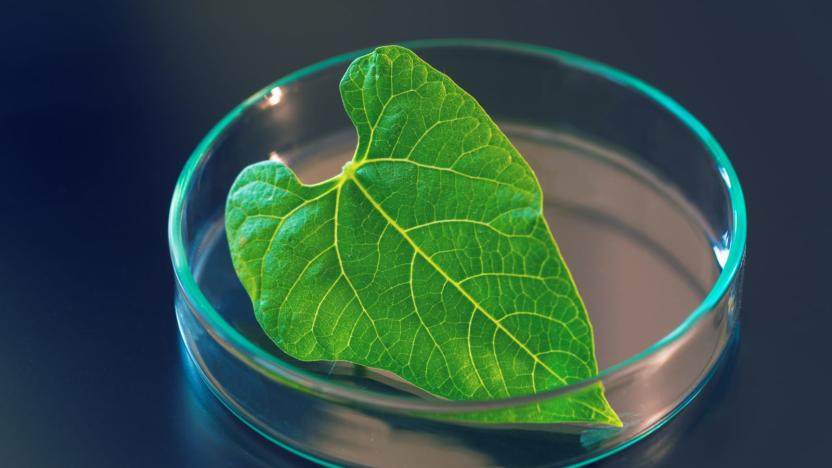
Researchers create hydrogen fuel with artificial photosynthesis
Scientists all over the world have been attempting to recreate photosynthesis in the lab in hopes of being able to mimic the process to create fuel. Now a team of researchers from the Department of Energy's (DOE) Brookhaven National Laboratory and Virginia Tech have figured out the secret behind a man-made molecular system or a "supramolecule" that can do the job well. Their lead researcher originally created two supramolecules a few years ago. Both of them can perform the processes needed for photosynthesis to occur: absorbing light, separating and transporting electrical charge and catalyzing the reactions needed to produce hydrogen that plants use to turn carbon dioxide into glucose. However, one was more effective than the other, so the team performed experiments to figure out why.

Belgian scientists turn polluted air into hydrogen fuel
To save the environment, humanity needs to do two things: reduce harmful gases and produce more energy from "green" energy sources. While plenty of research projects have tried to tackle these independently, few do both at the same time. Scientists from the University of Antwerp and KU Leuven (University of Leuven) in Belgium are developing a device that cleans up the air and generates power at the same time. It relies on a process called 'heterogeneous photocatalysis,' which uses light and a special catalyst (typically a semiconductor) to trigger a chemical reaction.
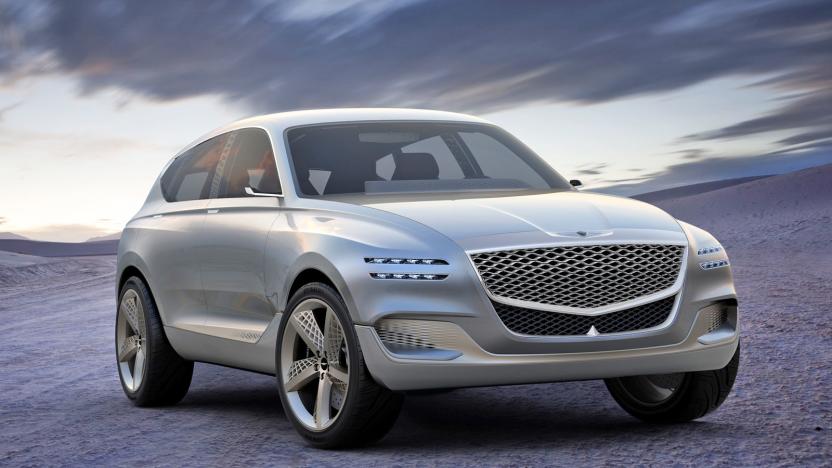
Prototype Genesis SUV melds hydrogen and plug-in power
It hasn't even been two years since Hyundai spun out its Genesis luxury badge as a separate division, but the new group is already making a name for itself. Genesis has unveiled its first experimental SUV, the GV80 Concept, and the prototype clearly pushes a few boundaries. For one, it's a plug-in fuel cell hybrid. The company isn't talking performance figures at this point, but the combination of electric and hydrogen power promises zero-emissions driving while still delivering a healthy range.
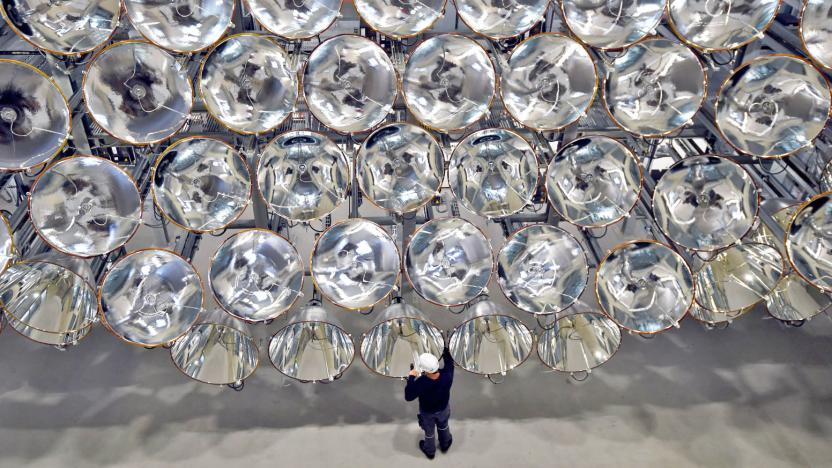
German researchers built a molecule-splitting artificial sun
Scientists from the German Aerospace Center (DLR) are testing a novel way to generate hydrogen, a potential green energy source, by using a massive array of lights normally found in movie theaters.
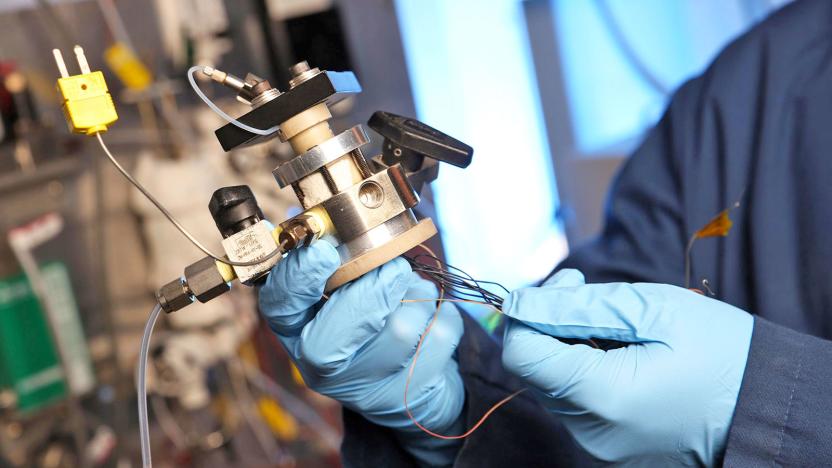
Tiny 'engine' turns natural gas into hydrogen
Here's the dilemma with hydrogen: fueling your car with the stuff is faster than charging an EV, but making and distributing it is inefficient and polluting. A team from the Georgia Institute of Technology has created a four-stroke "engine" that converts natural gas (methane) into hydrogen from just about anywhere, while capturing the CO2. It could one day hook up to your natural gas line, letting you fuel your car from home in a non-polluting way like you can with an EV -- pleasing both green tech boosters and oil companies.
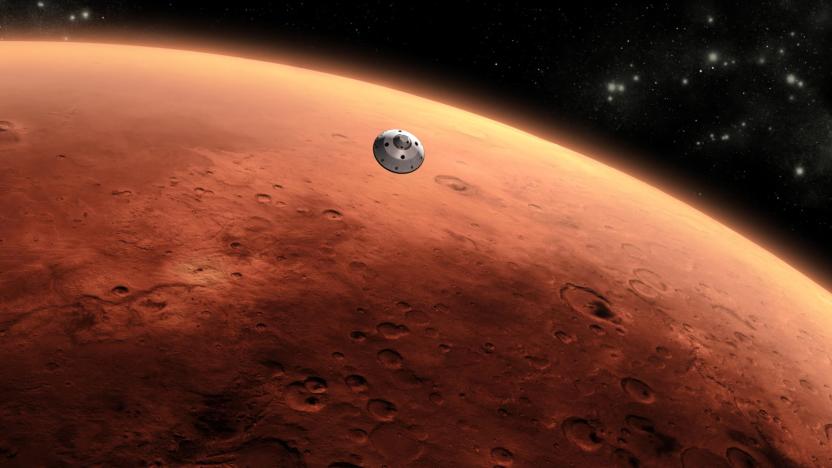
Mars' liquid water may have had an atmospheric 'escape route'
Scientists have long believed that Mars lost its liquid water very gradually, turning into a mostly dry planet over an extremely long time frame. However, they may have to toss that assumption out the window. A University of Colorado, Boulder team has discovered that Mars has an atmospheric "escape route" which may have helped hydrogen drift into space at much faster rates. Mars Express data shows that water molecules float higher than usual during the planet's warmer seasons, avoiding an Earth-like "cold trap" that keeps water close to the ground. Once the molecules are in the middle atmosphere, ultraviolet light helps break them up into oxygen and hydrogen -- and since hydrogen is very light, it doesn't take much for the element to escape Mars' gravity.

Researchers discover a better way to make ammonia
For the past century or so, we've been making ammonia the same way that Nobel-prize winning chemist Fritz Haber did: by smashing hydrogen and nitrogen gas together at 250 atmospheres and heating them to nearly 1000 degrees F. But a new method developed at the University of Utah turns that process on its head.

GM and Honda will mass-produce hydrogen fuel cells together
Just weeks after the car and energy industries began their big push on hydrogen, the first real action is being taken. General Motors and Honda have leapt into bed together to begin work on a new factory that'll mass-produce hydrogen fuel cells for their vehicles. Fuel Cell System Manufacturing (FCSM) will be based at GM's electric vehicle battery site in Brownstown, MI (pictured), and is expected to start work in 2020.
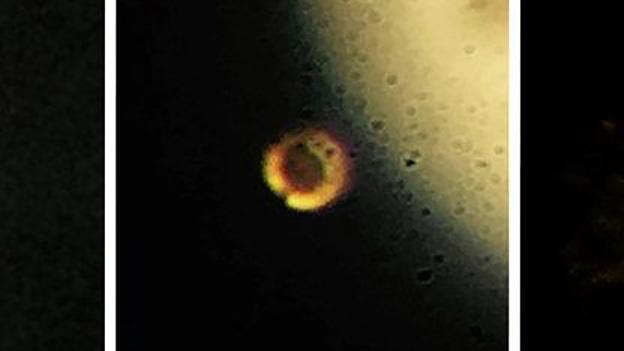
First hydrogen metal created on Earth draws critical doubt
Scientists from Harvard University say they've ended an 80-year quest by compressing hydrogen into a potentially superconducting metal. Using a diamond-tipped anvil, the team squeezed a hydrogen gas sample to 71 million PSI, more than the pressure at the Earth's core. "It's the first-ever sample of metallic hydrogen on Earth, so ... you're looking at something that's never existed before," says research lead Isaac Silvera. However, other scientists have reservations, saying it's possible the solid material they created (pictured above) is actually aluminum oxide that came from the anvil's diamond tips.

Honda's next-gen Clarity hydrogen cars land in California
Honda has delivered the first hydrogen-powered Clarity fuel cell vehicles (FCVs) to dealers in Torrance, California, home of the automaker's US campus. Approved buyers can take one home on a lease for $2,868 down and $369 a month for three years, a price that includes 20,000 miles per year and up to $15,0000 of hydrogen fuel.

Toyota confirms it will develop electric vehicles
Toyota's still adamant that it's going to get the world hooked on hydrogen-powered cars in our (hopefully) green future. But in the meantime, it's decided to dive head-first into building its first all-electric vehicle to take on Tesla. The carmaker has announced that it's launching a "virtual" company to examine and develop EVs. The business will have four employees, each one from a different part of the Toyota Group's various subsidiaries and suppliers.

Toyota could abandon hydrogen in favor of EVs
Toyota has been vocal in its belief that hydrogen-powered vehicles like the Mirai will eventually replace gas and diesels. But this insistence makes the company's recent decision to launch a long-range EV similar to the Tesla such a surprise. Reuters (via Nikkei) is reporting that the carmaker will quietly reverse its longstanding resistance to pure all-electric vehicles in the very near future. It's believed that Toyota will launch a new EV with a range of around 186 miles on a charge by 2020 as it looks to make all of its products emissions-free by 2050.
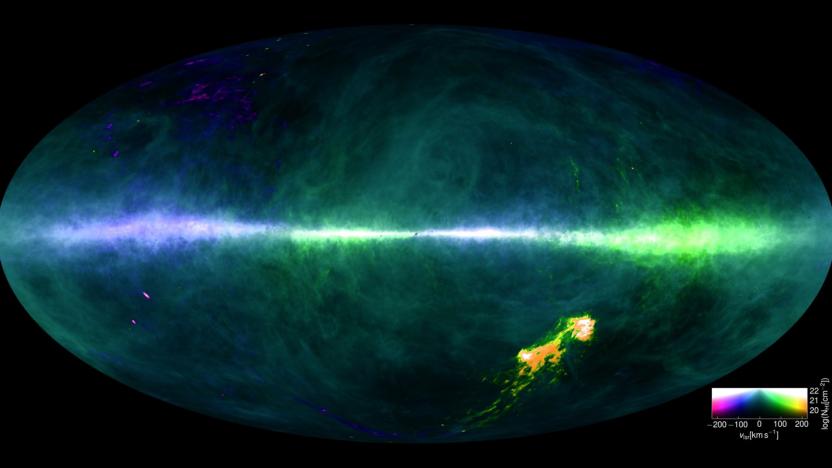
Scientists map the Milky Way Galaxy in exceptional detail
There have been detailed maps of the Milky Way before, but none quite so ornate as this. Researchers in the HI4PI sky survey have created a fine-grained map of our home galaxy using its most common material: neutral atomic hydrogen. Such studies have taken place before, as you might guess. However, the use of 10 billion data points from large radio telescopes (the Parkes Observatory and Effelsberg 100m) and noise-filtering algorithms have produced an image with twice the sensitivity as the previous best, and four times the angular resolution. The result? A view of the Milky Way so comprehensive that you can finally see the finer details of cloud structures in between stars -- they were too blurry before.

Chevy truck brings hydrogen fuel cells to the military
Hydrogen fuel cell vehicles aren't just for eco-conscious civilian drivers. Chevy has unveiled the Colorado ZH2, an experimental truck designed to test the feasibility of fuel cells in the military. Its powerplant is much quieter and cooler-running than a conventional gas motor, making it ideal for special ops where conventional trucks would blow your cover. However, its real specialty doesn't involve driving at all -- you can use the modular cell to power devices outside the truck with up to 25kW of continuous electricity. A squad could run equipment while camped out in mid-mission, for example.

Hydrogen fuel cell train offers pollution-free rail trips
Hydrogen fuel cells aren't gaining a huge amount of traction in cars, where there's a steady move toward electric. But what about regional railways, where long ranges and a lack of powered rails makes electric trains impractical? Alstom thinks that makes plenty of sense -- the French firm has introduced one of the first hydrogen fuel cell trains, the Coradia iLint. The 300-passenger locomotive can travel up to 497 miles at a reasonably brisk 87 miles per hour, all the while spewing nothing more than water. Hydrogen gives it the freedom to run on non-electrified rails, and it's considerably quieter than diesels -- helped in part by batteries that store unused energy.

Toyota's car of the future drives like a Camry
The Toyota Mirai looks like it's ready to swallow you whole. From the front, the hydrogen fuel-cell car has the aggressive stance of a bulldog. But as you circle the vehicle, the styling quickly softens to clean lines that lead to a rear end that would blend in among a sea of cars trapped in traffic. It's the future of driving (one version of it, anyway), but as I found after a recent test drive, it's also ready to hit the freeway without much fanfare.

Nissan's bio-ethanol fuel cell would lower the cost of clean cars
Hydrogen fuel cell cars are eco-friendly, but they come at a steep cost: hydrogen is normally expensive to make and store. Nissan, however, thinks it has a solution. It's developing a fuel cell system that will use bio-ethanol (generated from crops like corn and sugarcane) as a hydrogen source when it reaches vehicles in 2020. The technology combines the transformed bio-ethanol with air to power an electric motor. You're theoretically getting a "carbon-neutral" car with much more range than a pure EV -- Nissan is aiming for 497 miles on a tank where even the best Tesla Model S runs out of power at 294 miles. And since you wouldn't need to store hydrogen, you wouldn't need either giant tanks inside cars or special fuel stations.

Artificial 'leaf' could beat real plants at converting sunlight
Natural photosynthesis is considered a good target for solar energy conversion, but it's already considered old hat. Harvard scientists have developed a leaf-like system that should be more effective at converting solar energy than plants themselves. The technology boils down to a jar of bacteria (Ralstonia eutropha), a cobalt water-splitting system and a pair of electrodes. When you send electricity through this partly biological system, the electrodes turn the water into hydrogen gas that you can use for fuel and carbon-based materials. It's only 10 percent efficient, but that's better than the widely established 8 percent baseline for real-world performance.







